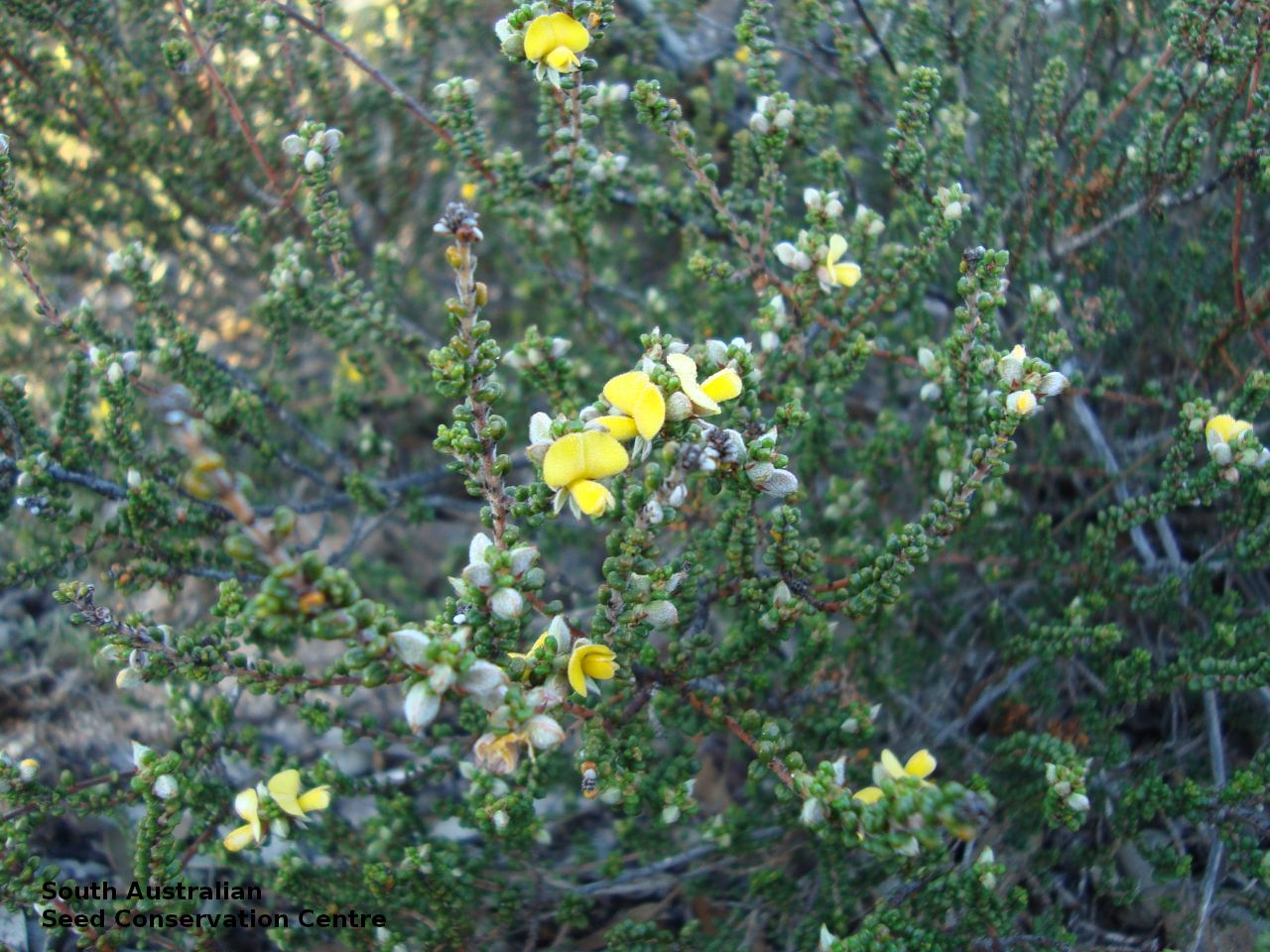Limestone Bush-pea
Display all 15 images















Regional Species Conservation Assessments per IBRA subregion.


Least concern
Near threatened
Rare
Vulnerable
Endangered
Critically endangered
Extinct
Data deficient
Adelaide
Arkaroola
Ceduna
Coober Pedy
Hawker
Innamincka
Marla
Marree
Mount Gambier
Oodnadatta
Renmark
Wudinna
Keith
Yunta
Display IBRA region text
| Kangaroo Island (KAN01) | Kanmantoo | Regionally Extinct [very old record, specimen is good; presumed extinct] |
| Eyre Hills (EYB03) | Eyre Yorke Block | Rare (IUCN: RA d(i,ii)) |
| Talia (EYB04) | | Least Concern |
| Eyre Mallee (EYB05) | | Least Concern |
| Yellabinna (GVD06) | Great Victoria Desert | Least Concern |
| Yalata (NUL03) | Nullarbor | Rare (IUCN: RA d(i,ii)) |
| Hampton (HAM01) | Hampton | Rare (IUCN: RA d(i,ii)) |
Botanical art
Kath Alcock painting: 1
Prior names
Pultenaea cymbifolia
Gastrolobium elachistum
Common names
Limestone Bush-pea
Etymology
Pultenaea named after Richard Pulteney (1730 – 1801), an English physician, botanist and biographer of Carl Linnaeus. Elechista from the Greek 'elachys; meaning small, possibly referring to the species small habit.
Distribution and status
Found on the western Eyre Peninsula and the far west Nullabor in South Australia, with an old record from Kangaroo Island, growing on plains to gentle slopes and coastal scarp in shrubland and woodland. Also found in Western Australia.
Native. Common in South Australia. Common in Western Australia.
Herbarium regions: Nullarbor, Eyre Peninsula, Kangaroo Island
AVH map:
SA distribution map (external link)
Plant description
Small prostrate, decumbent or erect shrub 50 cm tall with curly hairs on branchlets and young leaves. L eaves mostly opposite, decussate, crowded, rigid, oblong-ovate to 5 mm long 4 mm wide, convex by revolute margins, becoming glabrous above, densely hairy with curly hairs beneath. In?orescence in leave axil at terminal of stems with yellow pea-flowers. Flowering between July to December.
Fruits are hairy brown ovoid pod. Seed embryo type is
bent.
Seed collection and propagation
Collect seeds between October and January. Collect maturing pods, those that are brown or turning brown and contain hard black seeds inside. Place the pods in a paper bag and leave to dry for one to two weeks. Then rub the pods with a rubber bung to dislodge the seeds. Use a sieve to separate the unwanted material. Store the seeds with a desiccant such as dried silica beads or dry rice, in an air tight container in a cool and dry place. This species has physical dormancy that needs to be overcome for the seed to germinate. The seed coat needs to be ruptured so that water can enter the seed before germination can occur. Methods to rupture the seed coat include scarification with sand paper or nicking the seed coat with a sharp blade or hot water treatment by immersion in boiling water.
















